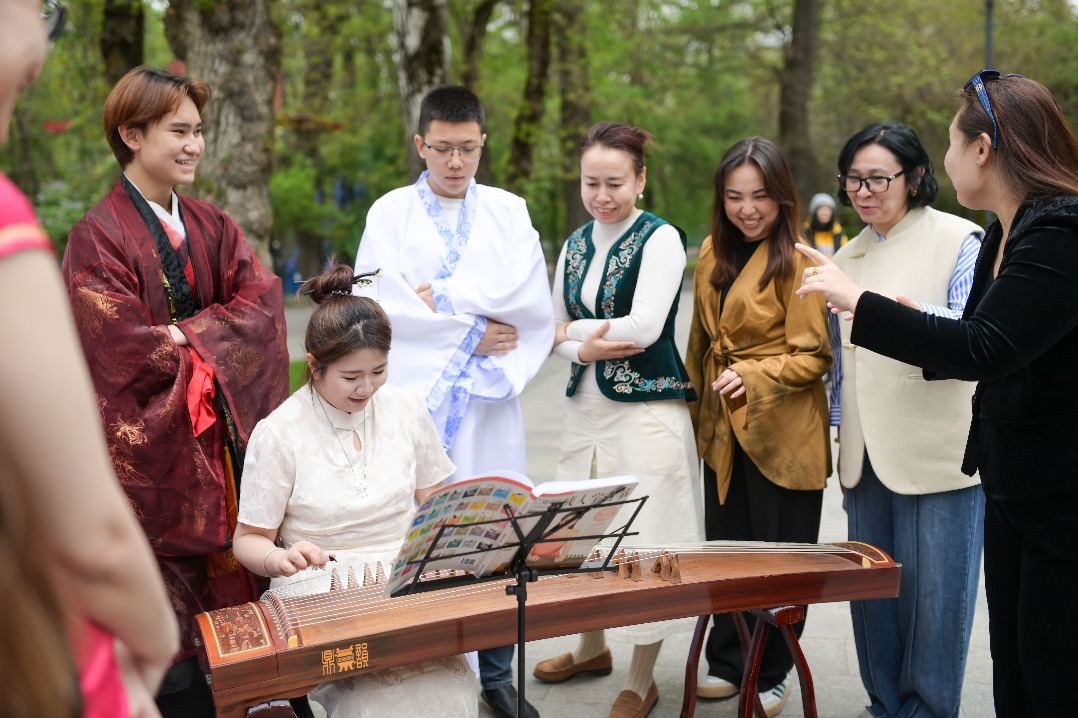Investment in young athletes paying off for China

Allez Li Na, Allez Li Na. If you followed this year's French Open, you may be familiar with this cheer. Li Na, China's No 1 female tennis player, surprised the world by taking the Coupe Suzanne Lenglen in Roland Garros. The success has ignited a renewed wave of national pride and immense interest in tennis. Having once been labeled as the "Sick man of East Asia" for its perceived backwardness and weakness, to become a great sports nation has been an ambition for leaders of China since the foundation of the People's Republic in 1949.
To train elite sportsmen and sportswomen and win international championships was part of the government's strategy to gain international recognition, to motivate Chinese citizens and to cultivate patriotism in a country, which was struggling with poverty and beset by internal divisions due to policies like the Great Leap Forward and the complexities of the "cultural revolution" (1966-1976). Sport was at that time used as an important aspect of China's foreign relation policies, such as the "ping pong diplomacy" in the early 1970s.
"Out of Asia and Go to the World" - this was the motto for China's sports teams. The first significant sporting success for China was in 1981, after which China's women's volleyball team won five consecutive world titles. These accomplishments generated a remarkable sense of nationalism and pride for multiple generations of Chinese.
The People's Republic of China's debut in the Olympics Games was in 1984, when it won a gold medal. In less than 20 years of participating the Olympic Games, China has made amazing progress and overtook the US and Russia at top of the gold medal table in the Beijing Olympics in 2008.
There are few countries that have invested as much money as China to develop sport. While the country started to open its doors for foreign investment in the 1980s, it also began to identify and invest heavily in talented athletes. It not only strengthened traditional sports, such as table tennis, volleyball and badminton, but it also spent vast resources in some lesser-known sports.
Tennis is one of the best examples. According to the Women's Tennis Association (WTA), less than 1 million people in China played tennis before tennis was introduced as an official event at the Olympics in 1988. Now, the WTA estimates there are 130 million Chinese interested in tennis, and 10 million recreational players - twice the number in France.
Investing in sports like tennis is also important for China's global image and "soft power". For a long time, China has dominated some sports, particularly table tennis, badminton and diving, so much so that some of the competition rules have been changed in order to "prevent" China from taking all of the medals, and to encourage other nations to participate. On the other hand, China also realizes these sports are not very visible globally and lack great commercial value, especially when compared with tennis, football or basketball.
China has a sophisticated national system of nurturing top athletes. Young talents are picked up at early ages across the nation and undergo a carefully integrated, rigid and demanding training program over many years. It is not surprising that China has produced some of the superstars of recent years, including Yao Ming (basketball), Shen Xue and Zhao Hongbo (figure skating), Liu Xiang (110 meters hurdles) and now, of course, Li Na.
The athletes also benefit from China's "Go Global" strategy, whereby athletes get training abroad, mostly in the US and Europe, and recruiting top coaches and players into China. Li Na has spent a great amount of time training abroad and her current coach comes from Denmark.
Li's success also reflects a growing middle class in China, as many of them are now practicing those sports that require certain levels of financial resources - unlike badminton and table tennis.
This success in commercial and competition terms is not only to be seen in tennis but also in other sports like golf, snooker and even equestrian activities.
With greater financial resources and with government backing, and now with a new inspirational role model, it is surely not immodest to say that we might expect more new faces and superstars - "Made in China" - in the near future at Roland Garros or Wimbledon.
The author is professor of international affairs at ESSCA School of Management, Lunam University, France.






























